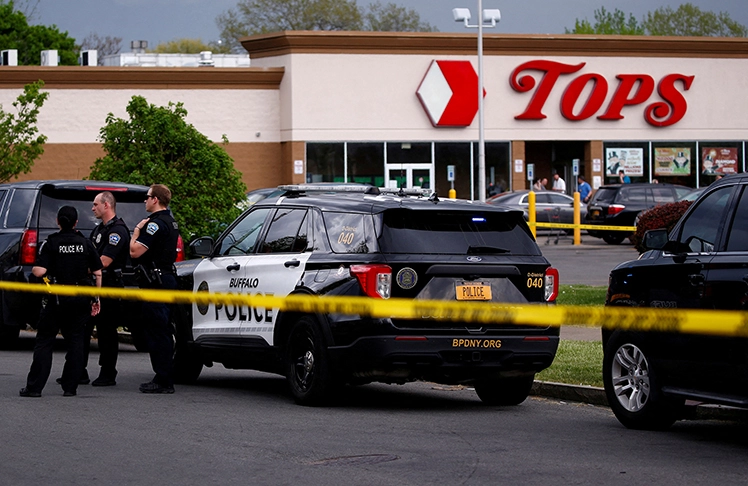
By Carolyn Thompson, Associated Press
BUFFALO, N.Y. (AP) – It’s hard for Jamari Shaw, 16, to have fun at the park with his younger brothers in their East Buffalo neighborhood. He’s too busy scanning for danger, an aftereffect of a gunman’s attack that killed 10 Black people at a local grocery store.
Sometimes, 17-year-old Alanna Littleton stays in the car when her family drives to that supermarket from their home just down the street.
“It’s such a level of tension,” Alanna said.
As the city on Sunday marks one year since the racist massacre, many young Black people in Buffalo are grappling with a shaken sense of personal security and complicated feelings about how their community was targeted.
While the white supremacist got life in prison for the killings, others face a lifetime of healing.
“I’m definitely gonna carry this with me,” Jamari said after school last week.
On May 14, 2022, an 18-year-old emerged from his car and began shooting people at the Tops Family Market, with the stated goal of killing as many Black people as possible. He wore body armor and livestreamed as he fired on shoppers and workers, killing 10 and wounding three more.
The killer from Conklin, New York, a small town about 200 miles from Buffalo, wrote online that his motivation was preserving white power in the U.S., and he chose to target Buffalo’s East Side because it had a large percentage of Black residents.
Since the mass shooting, Jamari notices emptier basketball courts in his neighborhood. People seem to stay inside more. He feels a hesitancy to drop into Tops now to get water or Gatorade before sports practice like he used to – a gnawing feeling of danger anywhere, from anyone.
“The fact that he (the shooter) wasn’t that much older, it’s really taken a toll, ” said Jamari, who feels especially protective of his four siblings, the youngest of whom is 5. “You get to thinking, ‘Who’s going to do what?’ It could be your best friend. You just never know.”
It’s on 17-year-old Abijah Johnson’s mind when he walks near the store.
“I get the sense of like, ‘What am I doing here? Didn’t 10 people die over here with my skin color from a racist person?'” he said at a recent conference put together by the family of shooting victim Ruth Whitfield, who was 86.
The oldest of those killed, Whitfield died buying seeds for her garden after spending time with her husband at a nursing home. Among the other victims was a man getting a birthday cake for his 3-year-old son, a church deacon helping people get home with their groceries, a popular community activist, and a retired Buffalo police officer who was working as a security guard.
“It was really hard to watch my family grieve like this, also to understand Black people anywhere are just under constant threat. It’s so sad,” Whitfield’s great-granddaughter, Nia Funderburg, 19, said at the conference. ”I hate carrying this pain for us.”
Wayne Jones’ mother, Celestine Chaney, was among those killed. A youth football coach, he said the discussions Black families often have with their sons about how to interact with law enforcement have broadened.
”That conversation that you have with young Black males about police? Now, it’s watch everybody,” he said, describing how even grocery shopping, an activity he enjoyed with his mother, puts him on high alert.
Jamari holds out hope that the community’s lingering pain will eventually lessen, but he can’t fathom ever understanding what motivated the shooter.
“We come together, we rejoice, we feast together, all that,” he said. “And then to have somebody – it doesn’t matter that he’s white – he just he did it out of spite.
“It’s bigger than race,” Jamari said, “it’s more like a mentality.”
As for the feelings of trauma experienced by people in the community over the attack, they could last for many years, ready to surface on anniversaries or when a similar mass shooting is in the news.
“A lot of times it diminishes over time, but these triggering things can last life-long,” said Dr. Anita Everett, director of the Center for Mental Health Services at the Substance Abuse and Mental Health Services Administration. The agency has provided the city with grant funding to address the trauma.
“In one way or another,” she said, “it affects almost everyone that’s in and around a community.”















